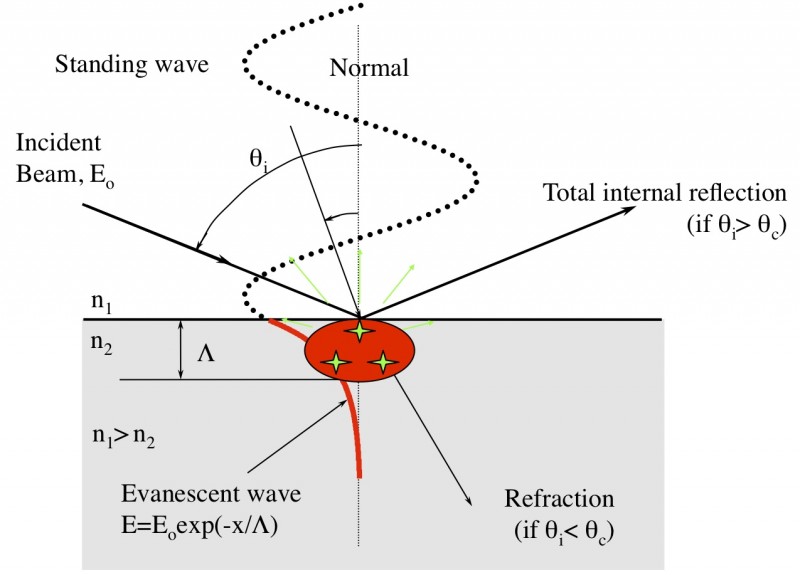Evanescent wave-induced fluorescence spectroscopy
Total internal reflection at the interface between two media of different refractive indices, n1 > n2, can result in the generation of an evanescent field within the medium of lower refractive index. This is an exponentially decaying field with a characteristic (1/e) penetration depth, Λ, which is dependent on the wavelength of the incident light, λ, the refractive indices of the two media, n1 & n2, and the angle of incidence, θi:
or
where θc is the critical angle:
In practice, the penetration depth is most easily varied by changing the angle of incidence.
The evanescent field can photoexcite a chromophore that is in close proximity to the interface, thereby attenuating the intensity of the totally internally reflected beam. If the absorbing species also fluoresces its collected emission can be used to probe photophysical properties within the interfacial region (several Λ), which is typically on the order of 10s-100nm.
